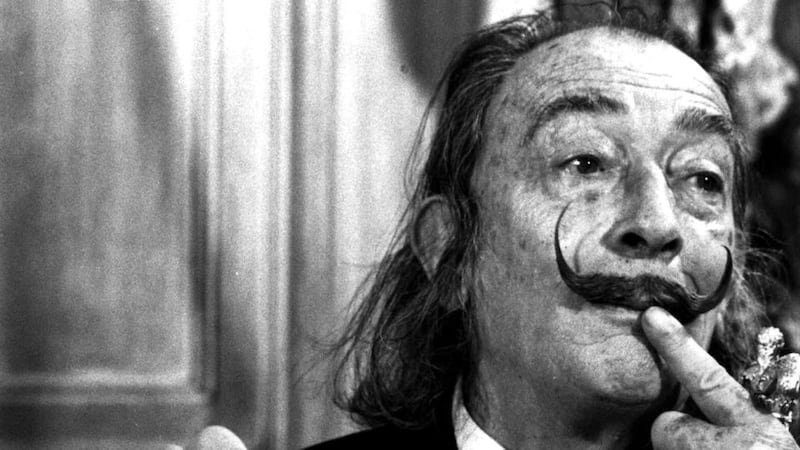DNA evidence taken from the recently exhumed body of Salvador Dalí has shown that he is not the father of a woman who had claimed to be the only child and heir of the eccentric surrealist.
Pilar Abel, a 61-year-old tarot card reader and fortune teller from Girona, has spent the past 10 years trying to prove that she is the fruit of a liaison between her mother and Dalí in 1955.
In June, a court in Madrid ordered the artist's body to be exhumed after previous attempts to determine paternity had failed. A month later, experts entered the crypt beneath the museum Dalí designed for himself in his home town of Figueres, Catalonia, to take DNA samples from his hair, nails and bones.
However, on Wednesday, the Gala-Salvador Dalí Foundation, which controls the artist’s lucrative estate – and which had opposed the exhumation – said analysis of the remains had shown that he was not related to Abel.
The foundation said a report submitted to the court by the National Institute of Toxicology and Forensic Sciences had established that Dalí was not her biological father.
“This conclusion comes as no surprise to the foundation, since at no time has there been any evidence of the veracity of an alleged paternity,” it said in a statement. “The foundation is pleased that this report puts an end to an absurd and artificial controversy, and that the figure of Salvador Dalí remains definitively excluded from totally groundless claims.”

It said the DNA samples would be returned shortly, adding: “The Dalí Foundation is also pleased to be able to focus again on the management of its extraordinary artistic legacy and in the promotion of the work and figure of Salvador Dalí.”
Abel told the Spanish newspaper El País that neither she nor her lawyers had yet received the results of the tests. “Until I’ve got official word, they can say what they like,” she said. “I’m not hiding away and no matter what the result is, positive, negative or invalid, I’ll give a press conference to all the media to explain the result.”
She added: “If it comes out negative, I’ll still be la Pilar.”
Abel had claimed that the resemblance between her and the artist was so marked that “the only thing I’m missing is a moustache”, adding that she had first learned of her supposed parentage from the woman she thought was her paternal grandmother.
Abel claims she told her: “I know you aren’t my son’s daughter and that you are the daughter of a great painter, but I love you all the same.” She also noted that her granddaughter was “odd, just like your father”.
Ten years ago, Abel was granted permission to try to extract DNA from skin, hair and hair traces found clinging to Dalí’s death mask. The results proved inconclusive.
A second attempt to retrieve samples followed later that year using material supplied by the artist’s friend and biographer Robert Descharnes.
Although Abel has claimed she never received the results of the second test, Descharnes’ son Nicholas told the Spanish news agency Efe in 2008 that he had learned from the doctor who conducted the tests that they were negative.
Had the DNA evidence supported her claim, Abel would have been heir to a quarter of Dalí’s fortune, which he bequeathed to the Spanish state and the foundation that bears his name and that of his wife and muse, Gala.
The latest twist in the extraordinary saga in the life and death of the surrealist had made headlines around the world – as had the fact that Dalí’s trademark moustache had survived the Grim Reaper’s scything.
Narcís Bardalet, the embalmer who prepared Dalí’s body after his death in 1989 and helped with the exhumation, said he had been thrilled and touched to see the surrealist’s best-known feature once again.
“His moustache is still intact, [like clock hands at] 10 past 10, just as he liked it. It’s a miracle,” he told the Catalan radio station RAC1.
“His face was covered with a silk handkerchief – a magnificent handkerchief … When it was removed, I was delighted to see his moustache was intact … I was quite moved. You could also see his hair.”
Guardian News and Media














